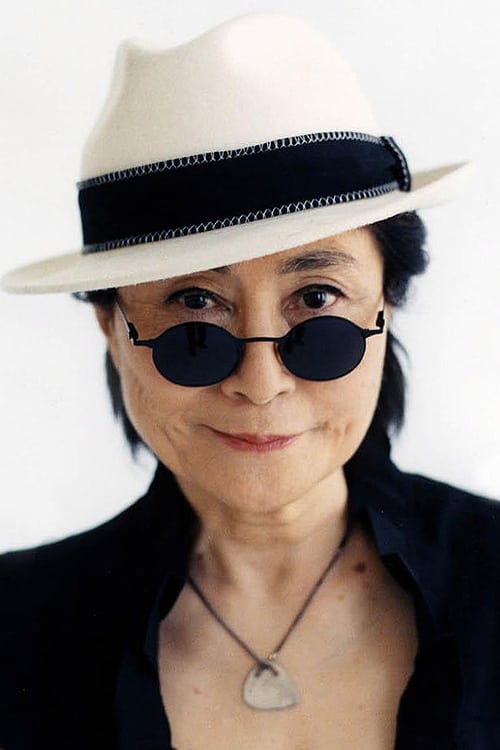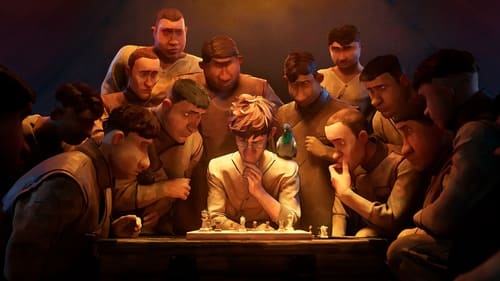
Executive Producer
Set in an alternate WWI reality where a senseless war rages on, two soldiers on opposite sides of the conflict play a joyful game of chess. A heroic carrier pigeon delivers the soldiers' chess moves over the battlefield as the fighting escalates. Neither soldier knows his opponent as the game and the war builds to its climatic final move. Whoever wins the game, one thing is for certain: there are no winners in war.
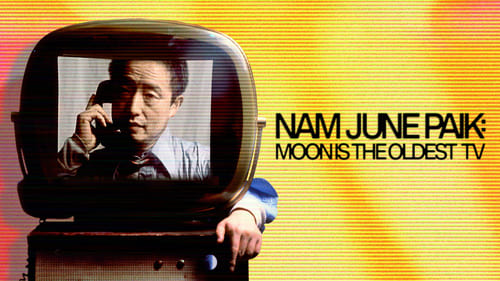
Self (archive footage)
The quixotic journey of Nam June Paik, one of the most famous Asian artists of the 20th century, who revolutionized the use of technology as an artistic canvas and prophesied both the fascist tendencies and intercultural understanding that would arise from the interconnected metaverse of today's world.

Self (archive footage)
On the 30th of January, 1969, the Beatles performed an unannounced concert from the rooftop of their Apple Corps headquarters at Savile Row, within central London's office and fashion district. Experience the final and unforgettable iconic performance of The Beatles in a special 60-minute presentation, digitally remastered into the image and sound quality of IMAX DMR technology.

Producer
On the 30th of January, 1969, the Beatles performed an unannounced concert from the rooftop of their Apple Corps headquarters at Savile Row, within central London's office and fashion district. Experience the final and unforgettable iconic performance of The Beatles in a special 60-minute presentation, digitally remastered into the image and sound quality of IMAX DMR technology.

Self (archive footage)
An exploration of the life and career of the Beatles superstar, with a look at the strange parallels between him and his killer Mark David Chapman.

Self (archive footage)
With the help of more than 10,000 dedicated Zappa fans, this is the long-awaited definitive documentary project of Alex Winter documenting the life and career of enigmatic groundbreaking rock star Frank Zappa. Alex also utilizes in this picture thousands of hours of painstakingly digitized videos, photos, audio, writing, and everything in between from Zappa's private archives. These chronicles have never been brought to a public audience before, until now.

Self (archive footage)
In December 1980, John Lennon and Yoko Ono had not spoken to the media for more than five years. With a new album to promote Lennon was prepared to speak in New York to Radio One D.J. Andy Peebles of the BBC. John surprised everyone by candidly discussing a variety of subjects he'd never spoken of before including The Beatles break-up, his relationship with Paul McCartney, his battles with addiction, political issues in the US and UK, his family and his homesickness for Liverpool. Lennon's heartfelt honesty and forthright revelations make this film all the more potent as he was brutally shot and murdered 48 hours later. John Lennon was just 40 years of age when he died. December 2020 is the 40th anniversary of his death. He would have been 80 years of age.

The tapes in the program consist of some of Mekas’ earliest cassettes from the 1990s not long after he first began working with video as well as more recent mini-DV tapes from 2010s. The contents of the tapes have not been previously seen in their entirety. The footage provides rare insight into aspects of Mekas’ video-making practice, as well as his activities, thoughts, dreams, and concerns, especially during the later years of his life.

Thanks
Tokyo, Japan, 1989. Lucy Fly, a foreigner who works as a translator, begins a passionate relationship with Teiji, a mysterious man obsessed with photography.
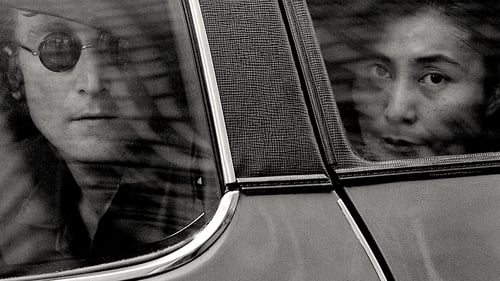
Self
Film telling the untold story of John Lennon's 1971 album Imagine, exploring the creative collaboration between Lennon and Yoko Ono and featuring interviews and never-seen-before footage.
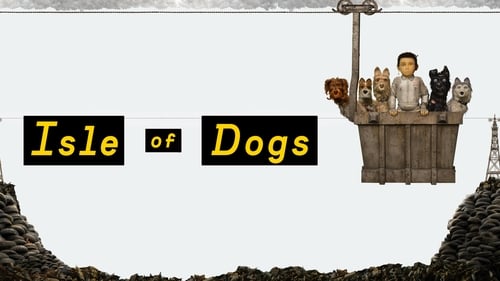
Assistant-Scientist Yoko-ono (voice)
In the future, an outbreak of canine flu leads the mayor of a Japanese city to banish all dogs to an island that's a garbage dump. The outcasts must soon embark on an epic journey when a 12-year-old boy arrives on the island to find his beloved pet.

Self
In 1961 Lithuanian American artist and impresario George Maciunas established the avant-garde art movement Fluxus. George details the rise of Fluxus following a sensationalized tour of “concerts” in Europe in 1962, and continuing in New York for most of the 1960s and ’70s. During this time Maciunas was converting the dying industrial buildings of Soho into a network of artists’ lofts, creating one of the first official real estate co-ops of artist-owned buildings. Maciunas’s life and legacy—as recounted by artists of his generation, including Yoko Ono and Jonas Mekas—ignited debates that remain pivotal to artists working today.
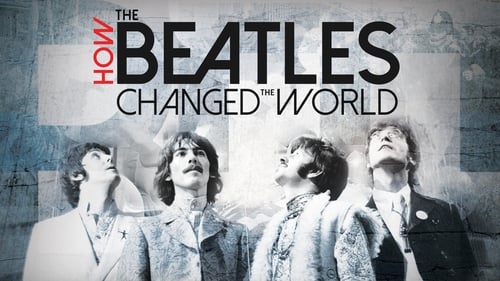
Self (archive footage)
The fascinating story of the cultural, social, spiritual, and musical revolution ignited by the coming of the Beatles. Tracing the impact that these four band members had, first in their native Britain and soon after worldwide, it reappraises the band and follows their path from young subversives to countercultural heroes. Featuring fresh, revealing interviews with key collaborators as well as a wealth of rarely-seen archival footage, this is a bold new take on the most significant band in the history of music and their enduring impact on popular culture.

Self
In his latest film, Mekas shares what he describes as “a valentine to Yoko Ono,” done in his signature diaristic style. Mixing the familiar 16mm film with DV video, he offers a fly-on-the-wall look at intimate moments spent with one of the foremost artists of that era, including performances by Ono and new footage of her recent work—a testament to her endurance and the friendships she has made and kept over the years.
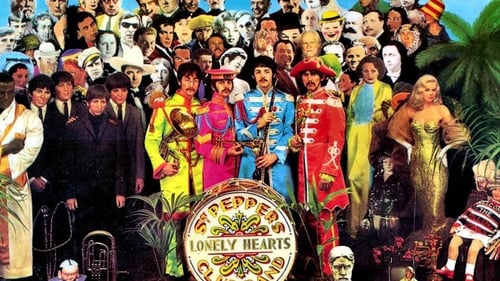
Herself (archive footage)
Featuring interviews with former employees, fellow musicians, family members and journalists, and supported by original and exclusive never-seen-before footage, this star-studded rockumentary offers a fascinating insight into the creation and recording of one of the most ground-breaking and influential albums in pop history.

Herself (archive footage)
In 1971, John Lennon and Yoko Ono embark on a search for a girl named Kyoko. On April 23rd, they are arrested by the police at a hotel in Palma de Mallorca, Spain.

Herself (archive footage)
Scott Freiman gives some context into what The Beatles were up to during the making of the best selling album of the 60's.

Yoko Ono Lennon's Courage Awards 2016

Herself (archive footage)
Two days before John Lennon was shot, British journalist Andy Peebles did a long radio interview with Lennon and Yoko Ono, and now explains what happened.

Are bad girls casualties of patriarchy, a necessary evil, or visionary pioneers? By tracing the concept of the bad girl in Japan as a product of specific cultural assumptions and historical settings, Bad Girls of Japan maps new roads and old detours in revealing a disorderly politics of gender. The essays explore deviancy in richly diverse media. Mountain witches, murderers, performance artists, cartoonists, schoolgirls, and shoppers gone wild are all part of the terrain.

Self (archive footage)
A look at the history of the American comedy publication and production company, National Lampoon, from its beginning in the 1970s to 2010, featuring rare and never before seen footage, this is the mind boggling story of The National Lampoon from its subversive and electrifying beginnings, to rebirth as an unlikely Hollywood heavyweight, and beyond. A humour empire like no other, the impact of the magazines irreverent, often shocking, sensibility was nothing short of seismic: this is an institution whose (drunk stoned brilliant) alumni left their fingerprints all over popular culture. Both insanely great and breathtakingly innovative, The National Lampoon created the foundation of modern comic sensibility by setting the bar in comedy impossibly high.

Herself (uncredited)
The documentary project The Term was conceived in May 2012. When the directing trio commenced mapping the Russian sociopolitical landscape, Vladimir Putin had just settled into the Kremlin for his third term. The original experimental format of “documentary bulletins,” which were published daily online, allowed for wide-ranging content; in the feature film version, however, the filmmakers focused solely on the members of various opposition groups. Nevertheless, the work’s neutral position remains and viewers have to interpret the objectively presented situations for themselves. The main characteristics of this strongly authentic movie include close contact with the protagonists, precise editing, and an effectively controlled release of information.
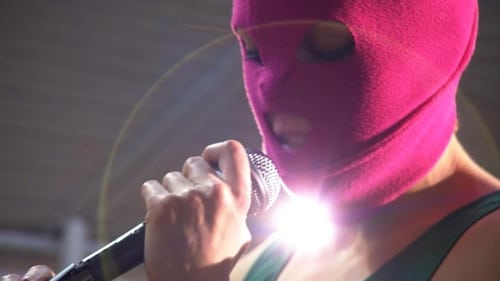
In the winter of 2011, after a controversial election, Vladimir Putin was reinstalled as president of Russia. In response, hundreds of thousands of citizens rose up all over the country to challenge the legitimacy of Putin’s rule. Among them were a group of young, radical-feminist punk rockers, better known as Pussy Riot. Wearing colored balaclavas, tights, and summer dresses, they entered Moscow’s most venerated cathedral and dared to sing “Mother Mary, Banish Putin!” Now they have become victims of a “show” trial.

Self
From Led Zeppelin to The Rolling Stones, Elvis to Madonna, John Lennon to Johnny Rotten, Bob Gruen has captured half a century of music through the eye of a lens. In this landmark documentary series, award-winning filmmaker Don Letts reveals the stories behind some of the most famous rock 'n' roll photographs of all time.

Notoriously press and camera-shy, David Geffen reveals himself for the first time in this unflinching portrait of a complex and compelling man. His far-reaching influence - as an agent and manager, record industry mogul, Hollywood and Broadway producer, and billionaire philanthropist - has helped shape American popular culture for the past four decades. This documentary offers a rare insight into the world of the man responsible for launching the early successes of Joni Mitchell, Tom Cruise, and Guns N’ Roses; co-founded DreamWorks; produced Cats and Dreamgirls; and is one of the largest contributors to the fight against AIDS. (SBS AU) Geffen narrates his unorthodox rise from working class Brooklyn boy to billionaire entertainment power broker in extensive interviews. American Masters explores the highs and the lows in Geffen’s professional and personal life through more than 50 new interviews with his friends, colleagues and clients, as well as other media luminaries. (PBS)
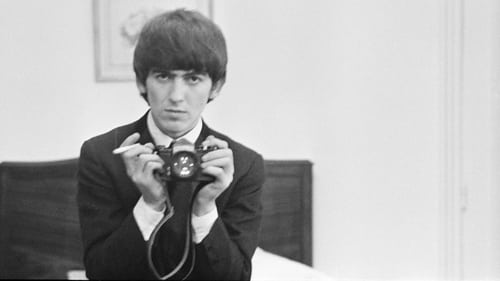
Self
Director Martin Scorsese profiles former Beatle George Harrison in this reverent portrait that mixes interviews and archival footage, featuring commentary from the likes of Paul McCartney, Eric Clapton, Ringo Starr and Yoko Ono.

“Drawing on his personal archives, Mekas has assembled a Fluxus vaudeville starring Yoko Ono, Joseph Beuys, and the late Nam June Paik. Most of the material is relatively recent although Ben Vautieur shows some early 1960s work to hilarious effect and Mekas channels Fluxus founder George Maciunas throughout.” – J. Hoberman, VILLAGE VOICE

Herself
Reconstructing John’s last day in detail by way of radio and TV reports, the memories of people John knew and those he encountered before his assassination by Mark Chapman, relive one of the most momentous and tragic events in music history.
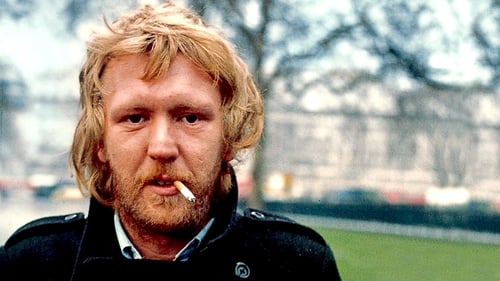
Herself
The life and work of the enigmatic singer-songwriter Harry Nilsson.

The story of music and the music industry told through interviews with musicians, composers and producers across genres.

Co-Producer
Four years in the making, the film features interviews and footage never seen before, as well as older scenes of John and Yoko together, in private and performing in public. Yoko Ono talks about her and John Lennon’s love and life together, about the art they made together and their struggle for peace and justice, including the imaginative methods they used to get their message across: “Give peace a chance.” Lennon’s music provides an inspirational soundtrack to a story that that began more than forty years ago and is still unfolding. In 2007, when Yoko Ono dedicated the Imagine Peace Tower to John’s memory she added: “My love for you is forever.”

Music
Four years in the making, the film features interviews and footage never seen before, as well as older scenes of John and Yoko together, in private and performing in public. Yoko Ono talks about her and John Lennon’s love and life together, about the art they made together and their struggle for peace and justice, including the imaginative methods they used to get their message across: “Give peace a chance.” Lennon’s music provides an inspirational soundtrack to a story that that began more than forty years ago and is still unfolding. In 2007, when Yoko Ono dedicated the Imagine Peace Tower to John’s memory she added: “My love for you is forever.”

Herself
This documentary takes an intimate look at the time Lennon, Yoko Ono and their son, Sean, spent living in New York City during the 1970s. It features never-before heard studio recordings from the Double Fantasy sessions and never-before-seen outtakes from Lennon in concert and home movies that have only recently been transferred to video. It also features exclusive interviews with Ms. Ono, who cooperated extensively with the production and offers an unprecedented level of access, as well as with artists who worked closely with Lennon during this period, including Elton John and photographer Bob Gruen (who took the iconic photograph of Lennon in front of the skyline wearing a “New York City” T-shirt).

Director
Feature-length compilation program presenting 37 out of 41 original fluxfilms produced and directed in the 1960s by Fluxus artists, including George Maciunas, Nam June Paik, Yoko Ono, Robert Watts, Paul Sharits, et al.

Self
Documentary in which art critic Waldemar Januszczak argues that beauty is still to be found in modern art, despite several recent books claiming the contrary.

Herself
This incredible documentary features in-depth contributions from wives Yoko Ono and Cynthia Lennon, son Julian Lennon and many previously unseen interviews with John himself. Through rare footage, we learn of his rise to fame with the Beatles, his divorce from Cynthia, his first meeting with Yoko, split-up of the band, and his decision to become a solo artist and advocate for world peace.

Self (archive footage)
We are drowning in celebrity culture and certainly no tabloid topic has been as big as Paris Hilton. Her incarceration and subsequent release, then re-incarceration and her ultimate release once again-left us submerged knee-deep in the twists and turns of her life. Famous for doing nothing, she's the ultimate manifestation of our obsession with celebrity culture and the massive profits that it wields. As long as we are willing to watch and read, who can resist feeding our habit?
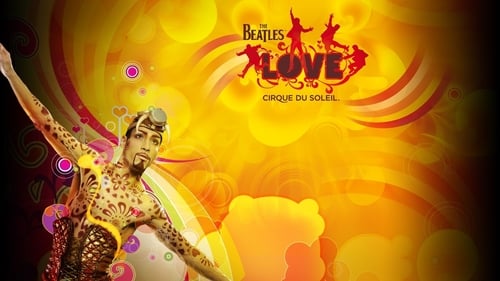
Herself
George Harrison's friendship with Cirque founder Guy Laliberté led them to an inspired idea: bring together the 20th Century's most popular music with the world's greatest circus performers. Though George Harrison passed away before development began, band members Paul McCartney and Ringo Starr; along with Yoko Ono and Olivia Harrison; pushed the vision forward. Using archival materials, interviews, and footage of the rehearsals and performances that chart the creative process, All Together Now charts the story of this bold collaboration and the resulting live show. This GRAMMY® Award-winning film takes you from the studio, as musical directors George and Giles Martin reshaped The Beatles' original masters into an original, vibrant soundscape, to the historic opening night in Las Vegas.
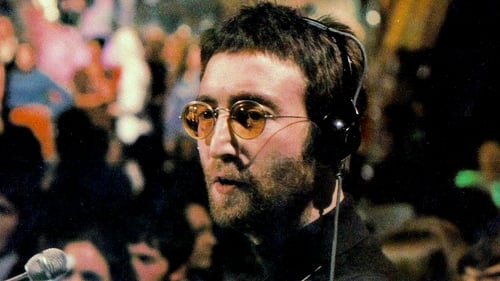
Self
A documentary about the making of John Lennon's seminal solo debut album, "Plastic Ono Band," featuring historical analysis and playbacks of the original multi-track session tapes. Includes interviews with the musicians and personnel involved with the recording sessions as well as Lennon's widow Yoko Ono and other associates of the Lennons.

Self
A portrait of New York artist Keith Haring. The film looks to Haring as an artistic role model for his preternatural talent, of course, but also for his infectious lust for life that had him as committed to social activism and teaching children as to his latest painting.
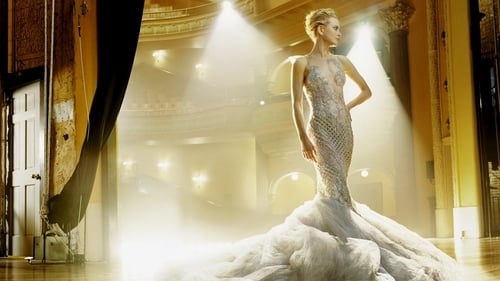
Self
An account of the professional and personal life of renowned American photographer Annie Leibovitz, from her early artistic endeavors to her international success as a photojournalist, war reporter, and pop culture chronicler.

as Herself
John Lennon & Yoko One: Give Peace A Song
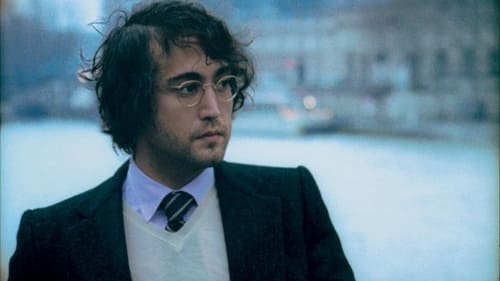
Executive Producer
A surreal fantasy on the themes of love and friendship, set to the music and songs of the Sean Lennon album "Friendly Fire".
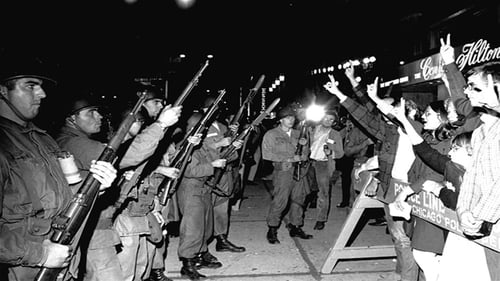
Herself
A documentary on the life of John Lennon, with a focus on the time in his life when he transformed from a musician into an antiwar activist.
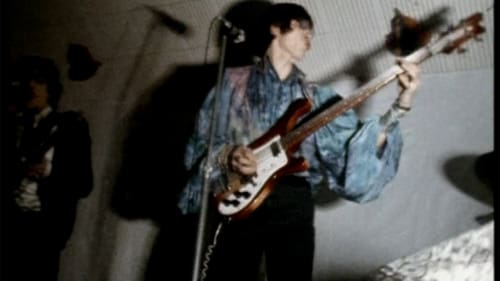
Self (uncredited)
Shot by movie maestro Peter Whitehead, this film features rare full length performances from the classic late 60's Pink Floyd line-up at Sound Techniques London & material from the legendary '14 hour Technicolor Dream' extravaganza in April '67 at Alexandra Palace.

Featuring new and exclusive interviews, Beatles' Biggest Secrets, reveals the inside story of the world's greatest pop group with explosive revelations about the extraordinary lives of Liverpool's favorite sons. From the band's formation and early exposure to the gritty world of sex, drugs and rock 'n' roll in the dingy strip clubs of Hamburg, Germany, the program then travels forward through the Beatles' careers with shocking surprises about their relationships with each other, their women and their inner circle. Filled with interviews from friends, relatives, colleagues and former girlfriends as well as rare film footage and original artwork by artist Klaus Voormann, this is the first fully rounded Beatles portrait to appear on DVD. This is the Beatles at their best -- and their worst!

Herself (archive footage)
John Sinclair first emerged out of his small-town Michigan background to forge a legendary course through the 1960s as a cultural activist, manager of the MC5, and Chairman of the White Panther Party. An early victim of the War on Drugs who faced 20 years to life in prison for giving two joints to an undercover policewoman, Sinclair served 29 months of a 9-1/2-to-10-year sentence before his legal victory on appeal changed the law for good. The long campaign waged by Sinclair culminated in a massive John Sinclair Freedom Rally headlined by John Lennon & Yoko Ono, Stevie Wonder, Bob Seger, Phil Ochs, Allen Ginsberg and Bobby Seale that resulted in Sinclair's release from prison on December 13, 1971-just three days after the event (Clint Weiler)

Documentary about British Art in the 60's produced by the BBC starting with Fraser and Kasmin, moving to the modern sculpture movement lead by Caro largely at Central Saint Martins, and finishing with political and performance art in London.

Self (archive footage)
Fueled by archival film clips and captivating anecdotes from friends and family, this unauthorized biography of John Lennon captures a lesser-known side of the Beatle who caused as much a stir with his personal causes as he did with his music. Highlights include rarely told stories about Lennon's upbringing from his half sister, Julia Baird, and tales from former members of Lennon's first band, the Quarrymen.

Self
This British documentary is more than an analysis of John Lennon's song "Imagine" and its ramifications for the world we live in, it's a tentative documentary on John (and Yoko)'s art and songs' influence on a lot of people in all parts of the world and from all walks of life. As such, it should be better known and considered part of the Beatles "canon". The footage shows everything from a John Lennon Museum in Japan to a John Lennon elementary school in Liverpool to his influence on the thinking of a former Communist from Georgia (of the former USSR). It is provocative and very well made with a serious contribution from Yoko.

Self (archive footage)
Yes he is a legend, and this collection of 20 newly remastered favorites will remind you just how powerful John's solo work could be. Includes Give Peace a Chance; Instant Karma; Mother (single edit); Jealous Guy; Power to the People; Cold Turkey; Love; Mind Games; Whatever Gets You thru the Night; #9 Dream; Stand by Me; (Just Like) Starting Over; Woman; Beautiful Boy (Darling Boy); Watching the Wheels; Nobdy Told Me; Borrowed Time; Working Class Hero; Happy Xmas (War Is Over) , and Imagine .

Thanks
This is not a film about gun control. It is a film about the fearful heart and soul of the United States, and the 280 million Americans lucky enough to have the right to a constitutionally protected Uzi. From a look at the Columbine High School security camera tapes to the home of Oscar-winning NRA President Charlton Heston, from a young man who makes homemade napalm with The Anarchist's Cookbook to the murder of a six-year-old girl by another six-year-old. Bowling for Columbine is a journey through the US, through our past, hoping to discover why our pursuit of happiness is so riddled with violence.
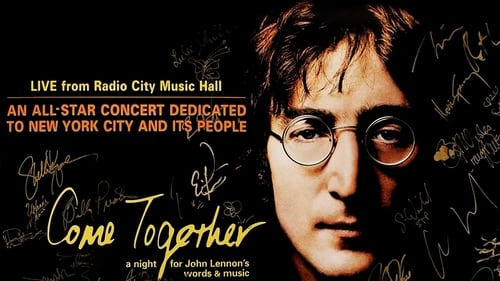
Come Together: A Night for John Lennon's Words and Music was a 2001 television program tribute to John Lennon. It aired on TNT and The WB. Originally planned to celebrate Lennon's accomplishments, the concert took place on October 2, 2001 at Radio City Music Hall in New York City, shortly after 9/11, and exactly one week before the 61st anniversary of Lennon's birth. It was dedicated to "New York City and its people" and presented as a fundraiser for the Robin Hood Foundation.[1] The concert was named for Lennon's Beatles song, "Come Together".

Self
Part of "The Women in Music" series

Self
An instant classic when released in September 1971, John Lennon's Imagine was the ex-Beatle's solo masterpiece, and its musical legacy is matched here by priceless footage of Lennon's creative process, independently edited from original 16-millimeter footage by producer-director Andrew Solt with the hands-off approval of Lennon's widow, Yoko Ono. Incorporating footage from John and Yoko's original film Imagine (clips of which were previously included in the 1988 documentary Imagine: John Lennon), Gimme Some Truth presents Lennon, Ono, coproducer Phil Spector, and a host of gifted musicians in a fluid context of conflict, community, and craftsmanship. Bearing witness to every stage of the recording process, this 63-minute documentary succeeds as a visual diary, a study of familiar music in its infancy, and a revealing portrait of the then-30-year-old Lennon--from witty clown to confrontational perfectionist--at the peak of his post-Fab Four inspiration.

herself
The year: 1969. Headlines blare war and civil unrest while John Lennon and Yoko Ono are in love. The eccentic rock 'n' roll couple has just gotten married, and more than happy to be together, they want to change the world. Lying in a hotel bed surrounded by journalists, they announce their mission for peace and invite the rest of the world to symbolically climb into bed with them and share their dream. People call them silly, naive, even ridiculous, yet one famous couple's bed-in spread new hope that there really could be an end to war, hate and violence. Here is rare footage from that amazing time, including footage from John and Yoko's wedding, the infamous bedside confrontation between John and conservative cartoonist Al Capp, Lennon debating media expert Marshall McLuhan, and meeting Canadian Prime Minister Pierre Trudeau. Now twenty years after Lennon's murder, Yoko and others involved in the peace mission reflect on the events of that magical, mystical year.
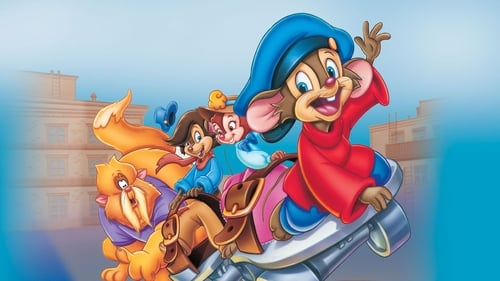
Assistant Director
Follow the clues to fun and excitement as the beloved little mouse takes on a big monster in this charming, full-length adventure. When a ferocious, mouse-nabbing creature puts fear into the hearts of New York City's rodents, Fievel and his friends team up with a reporter to chase after the scoop of the century and -- just maybe -- get a close-up look at the bad guy himself!

Music

Herself
On October 9th, 1972 an exhibition of John Lennon/Yoko Ono's art, designed by the Master of the Fluxus movement, George Maciunas, opened at the Syracuse Museum of Art, in New York. On the same day an unusual group of John's and Yoko's friends, including Ringo, Allen Ginsberg, Paul Krasner, and many others, gathered to celebrate John's birthday. This film is a visual and audio record of that event.
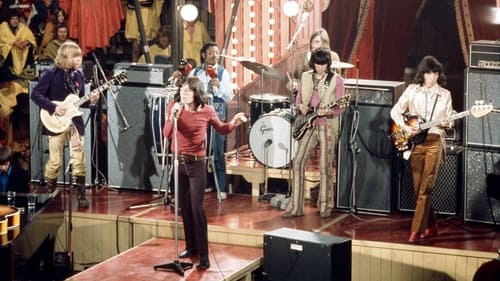
Self - Vocal
A 1968 event put together by The Rolling Stones. The film is comprised of two concerts on a circus stage and included such acts as The Who, Taj Mahal, Marianne Faithfull, and Jethro Tull. John Lennon and his fiancee Yoko Ono performed as part of a supergroup called The Dirty Mac, along with Eric Clapton, Mitch Mitchell, and Keith Richards.

Ornette Coleman is always asked, “what is Harmolodics?” Harmolodics is the term he coined to describe his music and his philosophy of life. He decided to do a short film about Harmolodics. A few artists were in enlisted, including Lou Reed, Thurston Moore, Yoko Ono and dancer Wunmi Olaiya. The film only went out to journalists as part of the Tone Dialing press kit. It was released publicly in honor of the occasion of Ornette’s 90th birthday March 9, 2020.

Nam June Paik's first single-channel videotape since 1989 is a heartfelt tribute to his long-time collaborator Charlotte Moorman. This portrait traces Moorman's career as an avant-garde performer, from her classical training to her notorious arrest as the "Topless Cellist" and subsequent talk-show celebrity. Rare documentations of Moorman's performances include Otto Piene's Sky Kiss and Jim McWilliams' Chocolate Cello. Interviews with Moorman's friends, family and collaborators, such as Yoko Ono, Christo and Jeanne Claude, Otto Piene, and Barbara Moore, among others, provide intimate recollections of the inimitable Moorman.

Herself
Not a documentary in the strictest sense of the word. Rather, it is a journey through the world of the artist Jonas Mekas - one of the exponents of independent U.S. movies; founder and director of the New York Anthology Film Archive.

Herself
This is a full-length documentary honoring the life and work of American composer and artist John Cage. Cage is considered one of the most influential composers of the 20th century. This documentary features interviews with various personalities from different fields as they introduce us to the life and work of this great American artist.

Herself
A special examining the music, people and issues that have been covered in "Rolling Stone" magazine over the past 25 years.

Director

Executive Producer

Self
This 56-minute documentary on America's most controversial and unique composer manages to cover a great many aspects of Cage's work and thought. His love for mushrooms, his Zen beliefs and use of the I Ching, and basic bio details are all explained intelligently and dynamically. Black Mountain, Buckminster Fuller, Rauschenberg, Duchamp are mentioned. Yoko Ono, John Rockwell, Laurie Anderson, Richard Kostelanetz make appearances. Fascinating performance sequences include Margaret Leng-Tan performing on prepared piano, Merce Cunningham and company, and performances of Credo In Us, Water Music, and Third Construction. Demystifies the man who made music from silence, from all sounds, from life.
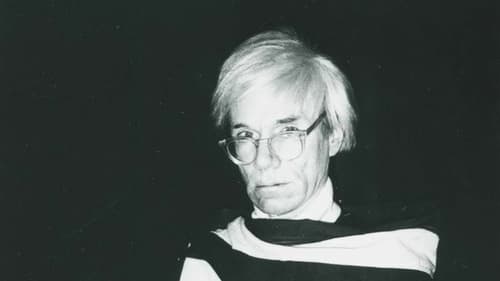
Self (archive footage) (uncredited)
Documentary portrait of Andy Warhol.
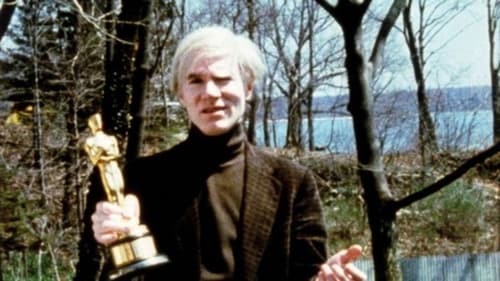
Self
This intimate portrait of Andy Warhol pulls together a unique library of material shot by New York film legend Jonas Mekas. Spanning from 1963 to 1990, the film features a cast of counterculture icons including Allen Ginsberg, George Maciunas, John Lennon, and Yoko Ono, as well as John and Caroline Kennedy, and Lee Radziwill (Jackie Kennedy Onassis's sister and Warhol muse)—to whom Mekas dedicates the film. The film features footage from the Velvet Underground's first public performance. A portrait of the remarkable life of arguable the twentieth century's most famous artist and leading iconographer.
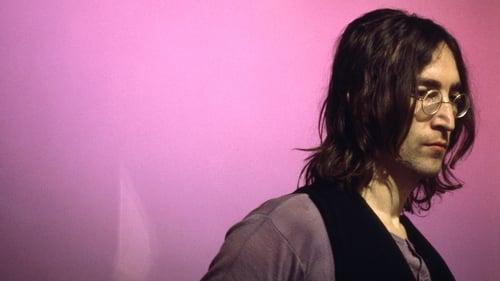
Self
The biography of former Beatle, John Lennon—narrated by Lennon himself—with extensive material from Yoko Ono's personal collection, previously unseen footage from Lennon's private archives, and interviews with David Bowie, his first wife Cynthia, second wife Yoko Ono and sons Julian and Sean.

Self
Music documentary directed by Patrick T. Kelly.

Self
This film is a fascinating look at some people afflicted with congenital deformities of an extreme nature. Their ability to live with their aberrations while remaining socially involved and upbeat is truly inspirational. While their predecessors were often seen in so called "freak shows" that were part of various exhibitions from Coney Island to traveling circuses, these performers were actually the more fortunate ones in an era of little tolerance for those who were different from the accepted norm. Many became famous and extremely wealthy, such as Tom Thumb (Charles Sherwood Stratton), who worked for many years with P.T. Barnum.

herself
In 1986, seventeen years after Yoko Ono and John Lennon’s animated conversation about love and six years after the beloved Beatle’s assassination, Ono commissioned independent animator John Canemaker to create a short animated film based on Lennon’s drawings, music, and interviews. Given her penchant for the intersection of art and philosophy, Lennon’s own quirky illustrations, and the odd fact that the couple’s love began in visual poetry long before they met, it was the perfect medium for commemoration.
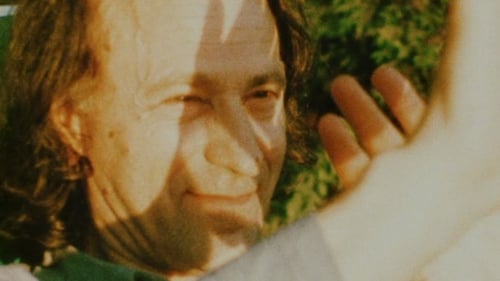
Self
A film collage tracing the story of the lives, loves, and deaths within the artistic community surrounding Jonas Mekas.

Yōko Ono
Tony Cox discusses his life and escape from cult leader John Robert Stevens of "The Walk" (Church of the Living Word) along with his relationship with his ex-wife Yoko Ono and John Lennon.

Executive Producer
August 30, 1972, John Lennon and Yoko Ono backed by The Plastic Ono Elephant's Memory Band, played a benefit concert to raise money for mentally handicapped children. It was their last concert together.

Producer
August 30, 1972, John Lennon and Yoko Ono backed by The Plastic Ono Elephant's Memory Band, played a benefit concert to raise money for mentally handicapped children. It was their last concert together.

Self (archive footage)
August 30, 1972, John Lennon and Yoko Ono backed by The Plastic Ono Elephant's Memory Band, played a benefit concert to raise money for mentally handicapped children. It was their last concert together.

Self
An in-depth look at one of the world's most controversial artists. This personal narrative features numerous songs by both Yoko and her late husband, John Lennon. These include "Imagine," "Give Peace a Chance," and "Walking on Thin Ice."

Self (archive footage)
A documentary of the decline of America. Featuring footage (most exclusive to this film) from race riots to serial killers and much-much more.

Self
Gérard Courant applies the Lettrist editing techniques of Isidore Isou to footage of late 70's pop culture. Courant posits that his cinema offers an aggressive détournement to the French mainstream, reifying a Duchampian view of film: "I believe in impossible movies and works without meaning... I believe in the anti-movie. I believe in the non-movie. I believe in Urgent... My first full length movie that is so anti-everything that I sometimes wonder if it really does exist!"

In 1969 Michel Auder began a series of video diaries that chronicled the art scene in downtown New York. In Chelsea Girls with Andy Warhol, Auder captures revealing moments in Warhol's public and private life: the opening of the 1970 Whitney Museum retrospective, a party held at John Lennon and Yoko Ono's home, a heated telephone conversation between Warhol, Viva and Brigid Berlin, and an illuminating interview conducted with Larry Rivers, the grandfather of Pop Art, following the publication of The Philosophy of Andy Warhol in 1975. The issue of money is a consistent topic of conversation with Viva, who after departing the Factory in 1969 sent Warhol a series of threatening letters demanding money.
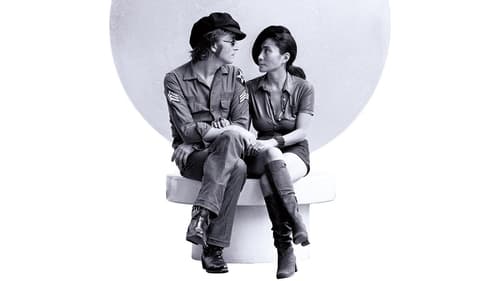
Producer
A surreal, half-fiction, half real life footage of a day in the life of John lennon and Yoko Ono, composed to music from John's historic 'Imagine' album and Yoko's 'Fly'.

Writer
A surreal, half-fiction, half real life footage of a day in the life of John lennon and Yoko Ono, composed to music from John's historic 'Imagine' album and Yoko's 'Fly'.

Director
A surreal, half-fiction, half real life footage of a day in the life of John lennon and Yoko Ono, composed to music from John's historic 'Imagine' album and Yoko's 'Fly'.

Herself
A surreal, half-fiction, half real life footage of a day in the life of John lennon and Yoko Ono, composed to music from John's historic 'Imagine' album and Yoko's 'Fly'.

as herself
August 30, 1972 benefit concert at Madison Square Garden for the victims of Willowbrook. John Lennon, Yoko Ono and the Plastic Ono Elephant's Memory Band headliine along with opening acts Stevie Wonder, Roberta Flack and Sha Na Na plus appearances by Geraldo Rivera, David Peel and Melanie Safka.

Eagle Rock are delighted to announce the release of two films by John and Yoko, Imagine and Gimme Some Truth. Both films, which focus on the Imagine era, have been hand restored frame-by-frame from the original film reels into HD, and their soundtracks have been remixed in glorious 5.1 surround sound, and remastered. Includes exclusive, never-before-seen bonus content on DVD and blu-ray. This is the first time both films have been commercially available at the same time. IMAGINE 1. Imagine 2. Crippled Inside 3. Good Morning 4. Jealous Guy 5. Don't Count The Waves 6. It's So Hard 7. Mrs Lennon 8. In Bag 9. I Don't Wanna Be A Soldier Mama I Don't Wanna Die 10. Mind Train 11. Whisper Piece 12. What's That In The Sky? 13. Power To The People 14. Gimme Some Truth 15. Midsummer New York 16. Oh My Love 17. How Do You Sleep? 18. How? 19. Oh Yoko! 20. Beach / End Credits

The importance of the Cannes Film Festival in world terms and what it represented for Brazil in 1971. For Brazilian cinema, Cannes 71 represented the transition from film to industrialized production. It is the meeting of producers, technicians, critics , celebrities in general, offering opportunities for greater knowledge and renewal of values
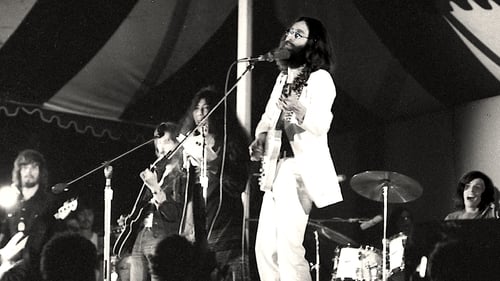
Self
Sweet Toronto is a documentary by D.A. Pennebaker of the Toronto Rock and Roll Revival, a one day festival held September 13, 1969 at Varsity Stadium on the campus of the University of Toronto and attended by some 20,000 persons. John Lennon played as part of the Plastic Ono Band, whose members also included Yoko Ono, Klaus Voorman, Alan White, and Eric Clapton. The video also features a selection of other acts: Jerry Lee Lewis, Little Richard, and Bo Diddley.

Director
Scenes of the erection of a building.

The film consists of continuous panning shots up a series of 367 human legs.

Director
The film consists of continuous panning shots up a series of 367 human legs.

Writer
The camera follows a fly as it walks about the body of a nude woman. Shot in extreme closeup (and accompanied by Ono's eponymous song), the film sets out to celebrate the human body.

This short follows Lennon and Ono as they take a hot-air balloon ride over snow-covered countryside.

Director
This short follows Lennon and Ono as they take a hot-air balloon ride over snow-covered countryside.

Director
The camera follows a fly as it walks about the body of a nude woman. Shot in extreme closeup (and accompanied by Ono's eponymous song), the film sets out to celebrate the human body.

Writer
Yoko Ono plays with our sense of anticipation by constructing a metaphor for the liberation of the female body and self.

Woman
Yoko Ono plays with our sense of anticipation by constructing a metaphor for the liberation of the female body and self.

Director
Yoko Ono plays with our sense of anticipation by constructing a metaphor for the liberation of the female body and self.

Yoko Ono
Documentary about filmmaker Shirley Clarke which originally aired on the French television series “Cinéastes de notre temps”.

Self (uncredited)
The filmed account of The Beatles' attempt to recapture their old group spirit by making a back to basics album, which instead drove them further apart.

Producer
A documentary covering the trials of James Hanratty, perceived to be wrongly accused at the time and one of the final eight people in the UK to be executed before capital punishment was effectively abolished.
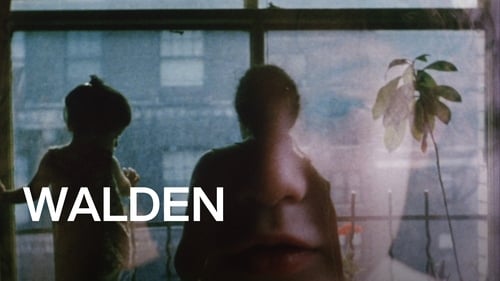
Self
An epic portrait of the New York avant-garde art scene of the 60s.

Writer
This film is from the point of view of a cameraman following a young woman through the streets of a city. He chases her down an alley and knocks her over, in a symbolic form of video assault. No dialogue.

Director
This film is from the point of view of a cameraman following a young woman through the streets of a city. He chases her down an alley and knocks her over, in a symbolic form of video assault. No dialogue.

Writer
Self-Portrait is a 1969 film made by the artist Yoko Ono. The film consists of a single 42 minute shot of the semi erect penis of her husband, John Lennon.

Director
Self-Portrait is a 1969 film made by the artist Yoko Ono. The film consists of a single 42 minute shot of the semi erect penis of her husband, John Lennon.

Writer
John and Yoko in the presidential suite at the Hilton Amsterdam, which they had decorated with hand-drawn signs above their bed reading "Bed Peace." They invited the global press into their room to discuss peace for 12 hours every day.

Director
John and Yoko in the presidential suite at the Hilton Amsterdam, which they had decorated with hand-drawn signs above their bed reading "Bed Peace." They invited the global press into their room to discuss peace for 12 hours every day.

Herself
John and Yoko in the presidential suite at the Hilton Amsterdam, which they had decorated with hand-drawn signs above their bed reading "Bed Peace." They invited the global press into their room to discuss peace for 12 hours every day.

Director
Avant-garde short by Ono.

Writer
A video to accompany 19 minutes of music from John and Yoko's Two Virgins album. We see Lennon's and Ono's faces superimposed upon each other's, then John and Yoko touching each other, hugging, and kissing. They are clothed, unlike on the Two Virgins album cover.

A video to accompany 19 minutes of music from John and Yoko's Two Virgins album. We see Lennon's and Ono's faces superimposed upon each other's, then John and Yoko touching each other, hugging, and kissing. They are clothed, unlike on the Two Virgins album cover.

Director
A video to accompany 19 minutes of music from John and Yoko's Two Virgins album. We see Lennon's and Ono's faces superimposed upon each other's, then John and Yoko touching each other, hugging, and kissing. They are clothed, unlike on the Two Virgins album cover.

Director
The feature length version of Bottoms by Yoko Ono

A 16 mm film, featuring Yoko Ono's own eye slowly blinking, shot by Peter Moore with a high-speed camera at 2,000 frames per second, which is projected at normal speed, 24 frames per second, thus creating a slow-motion effect.

Writer
A 16 mm film, featuring Yoko Ono's own eye slowly blinking, shot by Peter Moore with a high-speed camera at 2,000 frames per second, which is projected at normal speed, 24 frames per second, thus creating a slow-motion effect.

Cinematography
Close-ups of two faces, shouting at each other.

Director
Collected as part of the Fluxfilm Anthology (a multi-reel compendium of 37 short films assembled by Fluxus founder and central operator George Maciunas), One captures the lifespan of a single match recorded at 2,000 frames per second using a 16mm high-speed camera. The frame rate is then decelerated to the standard 24fps for presentation. The film emphasizes each gesture, sway and flare of flame as the small pinewood carrier ignites across the landscape of the filmstrip and screen, signalling the drama and poetics of this ”minor” event before the fire is extinguished. One also stands as an unassuming beacon, immortalizing on film the essence of some of Ono’s early concerns as an artist. At the slightest touch of fire, they burst into flame. Strike everywhere. Strike often.

Director
A 16 mm film, featuring Yoko Ono's own eye slowly blinking, shot by Peter Moore with a high-speed camera at 2,000 frames per second, which is projected at normal speed, 24 frames per second, thus creating a slow-motion effect.

A smile gradually fades into a neutral facial expression.

Writer
This film consists entirely of close ups of famous persons' bottoms. Ono meant it to encourage a dialogue for world peace.

Herself
This film consists entirely of close ups of famous persons' bottoms. Ono meant it to encourage a dialogue for world peace.

Director
This film consists entirely of close ups of famous persons' bottoms. Ono meant it to encourage a dialogue for world peace.

Self
The films were made between 1964 and 1966 at Warhol's Factory studio in New York City. Subjects were captured in stark relief by a strong key light, and filmed by Warhol with his stationary 16mm Bolex camera on silent, black and white, 100-foot rolls of film at 24 frames per second. The resulting two-and-a-half-minute film reels were then screened in 'slow motion' at 16 frames per second.

Ito
A young Japanese girl arriving in New York City gets mixed up with mobsters and dope dealers.

Herself
Filmed at New York’s Carnegie Hall, Cut Piece documents one of Yoko Ono’s most powerful conceptual pieces. Performed by the artist herself, Ono sits motionless on the stage after inviting the audience to come up and cut away her clothing in a denouement of the reciprocity between victim and assailant.

Hi-Red Centre were comprised of Genpei Akasegawa, Natsuyuki Nakanishi and Jiro Takamatsu, who enacted ‘happening’-style performance art in unusual spaces during the early 1960s in Japan. The film is an extremely rare document of one of their early events, where they hired out a room in the Imperial Hotel and invited many friends and professionals in the art scene to participate in the occasion. The performance parodies Cold War fears and the construction of private bomb-shelters, as they diligently measure each guest’s weight and proportions in pretence that they are to build human-size shelters for each individual. Key figures of the art scene make an appearance, including Yoko Ono, video-artist Nam June Paik, noise artist Yasunao Tone, filmmaker Masao Adachi and graphic designer Tadanori Yokoo. A rarely seen and exceptional insight into the Japanese art scene of the era, Jonouchi records the event in his characteristically erratic style.

herself
A group of youths try to create works they think suitable for filling up the "hollowness" of life. For example, by hiring an orchestra and having its members count the stars in the sky from dusk to dawn, they create a new kind of music. Ms. Yoko Ono, the leader of the group, who calls herself a one-time musician, poet, and painter, explains the motives of their eccentric conduct.

Music
"10 minutes of the act of creation itself run through close up and magnifying lenses. " -T.I.

Self (archive footage)
On August 22, 1962, Michael Gregsten was murdered, and his lover Valerie Storie raped and shot on the A6 at Deadman's Hill in Bedfordshire. James Hanratty, who denied the murder and claimed he had been misidentified, was hanged for the crime at Bedford Prison. 40 years later, the latest DNA verdict confirmed he was guilty as charged. Valerie Storie blasted campaigners who doubted her word. In her first interview for 36 yrs, she tells of the horrific events that left her paralyzed, her battle to work again and the fighting spirit that pushes her to live a full and active life.

Producer
A film documenting the love story between iconic musicians John Lennon and Yoko Ono.
